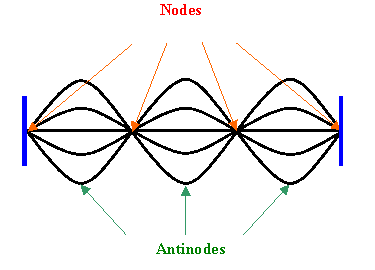top of page

Wave Interactions
Student Learing Targets
- students can explain how waves interact when they meet an obstacle
- students can explain what happens when two waves interfere
Interference?
theres two types of interference, constuctive and destructive. Ever wonder which one is which? well to compare them they both involve the interaction between two waves or more waves. to contrast them, constructive waves involve two waves that are the same size and in the same place and time, because of they they collide and form a bigger wave, such as constucting something. on the other hand, destructive waves involve waves that are in the same place and time but are opposite in size/dirrection. because of this when these waves combine the wave reduces or even destros as in destruction something.
Refraction?
- refraction is the velocity of a wave changing due to the substance is it traveling though, for example. if you put a a straw in a glass cup of water and you stare through it, there will be a dent parting the straw, clearly the straw isnt but it looks like that because of light traveling thorugh the water and glass is slower than the cup and air above, making it crease.
An other example would be point a laser through a glass water and becasue the laser wave is going through the water, it slows down and makes it go another direction(s).
Vocabulary
reflection - the throwing back by a body or surface of light, heat, or sound without absorbing it.
diffraction - the process by which a beam of light or other system of waves is spread out as a result of passing through a narrow aperture or across an edge
refraction - the fact of light, radio waves, etc., being deflected in passing obliquely through the interface between one medium and another or through a medium of varying density.
interference - the combination of two or more electromagnetic waveforms to form a resultant wave in which the displacement is either reinforced or canceled
constructive interference - the interference of two or more waves of equal frequency and phase, resulting in their mutual reinforcement and producing a single amplitude equal to the sum of the amplitudes of the individual waves
destructive interference - the interference of two waves of equal frequency and opposite phase, resulting in their cancellation where the negative displacement of one always coincides with the positive displacement of the other
standing wave - a vibration of a system in which some particular points remain fixed while others between them vibrate with the maximum amplitude

Reflection?
- having trouble with the vocabulary word reflection? well an example for reflection can be a laser reflecting off a mirror. the angle the laser uses to hit the mirror is the same size of angle it is reflected.

Diffraction
- diffraction is the bending of a wave around an object after going through an opening, as in the light wave bending around the wall and door after going through the seam beneath the door or the cracks bewteen the door and wall.
- this picture demostrates diffraction by showing how the waves curve towards the object they are going through. The smaller the opening the curvier they are, and bigger the opening the less curve it is.
Some examples that are related to diffraction could be the sound wave going through an airvent arocc the building, a light wave going through a sewer grill.

Standing Wave
- a standing wave can be created with violine strings making them to vibrate and its orbitals in an atom. It occurs by tend to have stable points called the nodes. Once you pull on the sting its apmlitude starts larger than it ends causing it to have different pitches.


Standing wave
- this video shows how the standing wave interacts with other waves to create the harmony. as you can see, in all waves, they all have a point in which they all cross, the nude, and they all have antinodes. Standing waves can be used to make music, such as harmonies and tunes, as in this video.
bottom of page